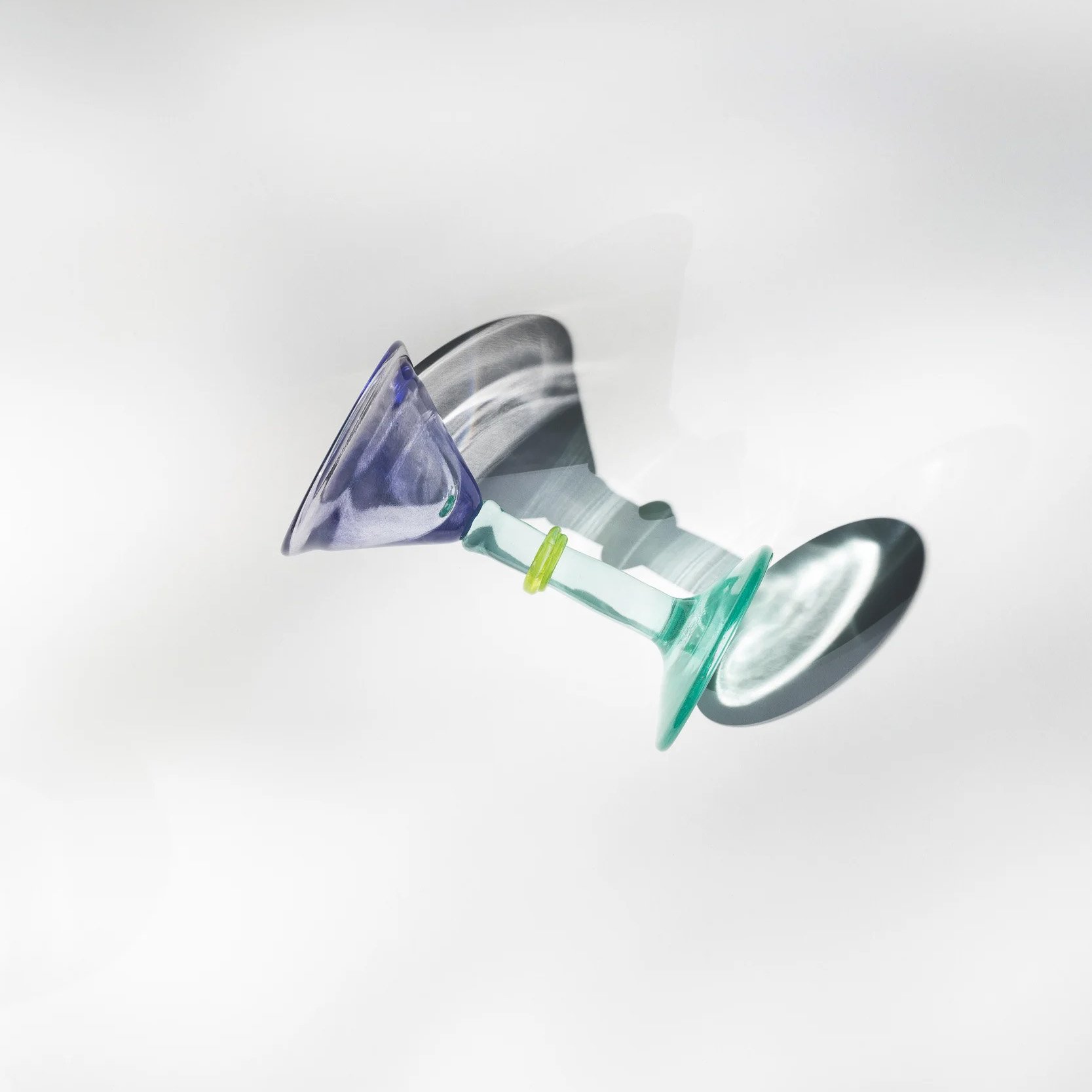Slowed-down Journey
2003 - Drawing & Print (Drawing & Print)
Roman Ondak
As the caption purposely admits, these drawings were made by friends of Ondák’s at home in Slovakia asked to interpret places he has journeyed to. The description of the blond artist wearing the same outfit and bag in places of transit like airports, stations or streets are faithful in straightforward (verging on naïve) styles. His own skill as artist is displaced and delegated to others with no particular gift in draftsmanship. Taking the role of a commissioner recurs regularly in Ondák’s work, other examples include Common Trip (2000) constituted with 128 elements, I’m Just Acting in It (2007) with 24 drawings, for instance. These eight drawings were placed in variegated simple home decoration frames to create a sort of storyboard for the artist’s life. For political, personal or economic reasons, not everyone has similar possibilities for mobility. Ondák’s act of sharing his memories expands the potential impact of art for a different public, made actors on these occasions. The interpretations give different viewpoints but maintain a certain continuity, as if it is the artist’s travelogue once removed. The repetitive descriptions of a walking man have interesting parallels with Francis Alys’s two-dimensional work.
In 2009, Roman Ondák won the Golden Lion at the Venice Biennale for Loop , the Pavilion of the Czech and Slovak Republics, for which he brought the same plant-life and trees growing outside inside. This highly considered installation epitomizes Ondák’s work. With often discreet, tongue-in-cheek, conceptual, participatory modes, he succeeds in profoundly questioning the art world and its established quirks, exhibition spaces, behaviors like queuing, labeling or various pedagogical approaches, visitor experience, any misplaced preciousness about authenticity or authorship. Various tactics (asking friends for drawings) or forms (shoelaces for instance) recur in his photographs, performances, installations, videos. Borderlines are deliberately blurred between the exhibition space and reality. This is infused by his relation to each specific project context and by his own ongoing experience of changing Eastern Europe. Roman Ondak was born in 1966 in Zilina, Slovakia. Lives and works in Bratislava .
Colors:
Related works sharing similar palette

© » KADIST
Prabhakar Kamble
2022To produce the series of sculptures collectively titled Utarand , Prabhakar Kamble relocated his studio to Kolhapur, Maharashtra, near the village where he was born into a family of daily wage earners...

© » LENS CULTURE
Articles of Virtu - Photographs by Bryan Birks | Text by Magali Duzant | LensCulture Award winner Articles of Virtu Prized old automobiles—that most American of obsessions—are the entry point to the surprising beauty and tenderness of their owners, the communities they belong to, and the aspirations they hold dear...

© » KADIST
Phan Quang
2013Phan Quang’s portrait series Re/cover grapples with a lesser-known history in Vietnam...

© » KADIST
Voluspa Jarpa
2012To make Minimal Secret (2012), Jarpa created sculptures based on pages of declassified CIA information about the United States’ involvement in Chile...

© » LENS CULTURE
Whispers - Photographs by Yuanbo Chen | Text by Magali Duzant | LensCulture Feature Whispers A multi-layered approach to visual storytelling — a conversation, a portrait, and a detail of a personal object or a place — captures the shared experiences of Chinese citizens coping with isolation while abroad during the Covid lockdown...

© » KADIST
Ahmet Ögüt
2022Monuments of the Disclosed by Ahmet Ögüt is an NFT series of digital monuments to whistleblowers...

© » KADIST
Martin Kippenberger
19897″ Single ‘Pop In’ by Martin Kippenbergher consisting of a vinyl record and a unique artwork drawn by the artist on the record’s sleeve...

© » IGNANT
Crafted Elegance: Hendrick’s Gin And Artist Boris De Beijer Unveil Limited Edition Cocktail Glasses - IGNANT Words: IGNANT magazine Photographer: Clemens Poloczek Name Boris De Beijer Images Clemens Poloczek Words IGNANT magazine Hendrick’s Gin has joined forces with artist and glassblower Boris de Beijer for an exclusive partnership as part of this year’s festive campaign...

© » KADIST
Thomas Kilpper
2009These two images come from the series called “State of Control” which Kilpper made in the building formerly occupied by the Stasi in Berlin...

© » KADIST
Dora Garcia
2008Dora Garcia’s work is a result of institutional critique and more generally that of language, following the conceptual artists of the 1960s like Weiner and Kosuth and Fraser from the 1980s and 1990s...

© » KADIST
Andrew Grassie
2009In 2008, Grassie was invited by the Whitechapel Gallery to document the transformation of some of its spaces...






/cdn.vox-cdn.com/uploads/chorus_asset/file/22496659/ss_856dc0a7fdf8bffb04cff24a3c9176e628879ff5.jpg)

